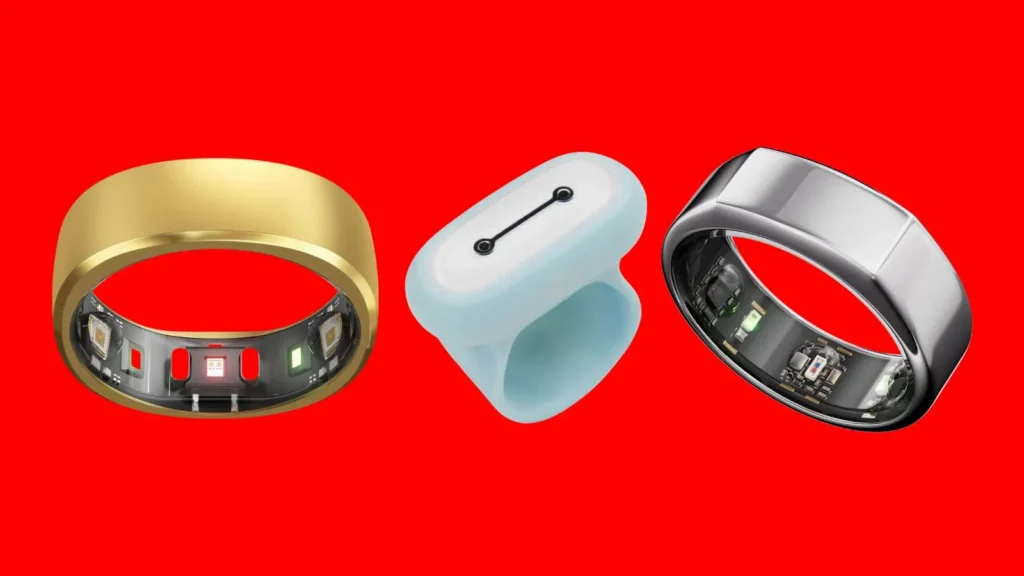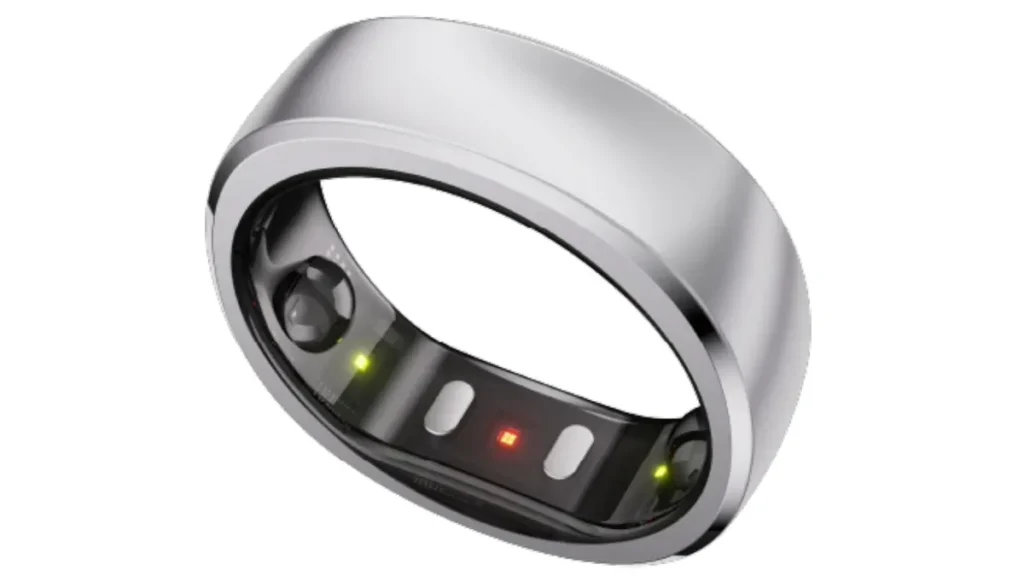Blog
How Smart Health Rings Monitor Your Sleep and Activity
Smart health rings are the latest innovation in wearable technology, offering discreet yet powerful tools for tracking health metrics. Unlike bulkier fitness bands or smartwatches, health rings are lightweight, stylish, and designed for continuous wear. They monitor a range of metrics, including sleep patterns, physical activity, and even heart health, making them ideal for anyone looking to improve their well-being.
In this article, we’ll explore how smart health rings monitor your sleep and activity, the technology behind them, and the benefits they bring to your health journey.
1. What Are Smart Health Rings?
Smart health rings are compact, wearable devices equipped with advanced sensors that track a variety of health metrics. Designed to be worn like a regular ring, these devices use cutting-edge technology to gather and analyze data, which is then displayed on a connected app.

Key Features of Smart Health Rings:
- Sleep tracking (e.g., stages of sleep, duration, and quality).
- Activity monitoring (e.g., steps, calorie burn, and movement intensity).
- Heart rate and heart rate variability (HRV) tracking.
- Temperature monitoring for health insights.
2. How Smart Health Rings Monitor Sleep
1. Tracking Sleep Stages
Smart health rings use optical heart rate sensors and accelerometers to monitor sleep stages.
- Light Sleep: Identifies lighter phases of rest where the body is still somewhat alert.
- Deep Sleep: Measures restorative sleep stages critical for recovery and growth.
- REM Sleep: Tracks the dreaming phase, crucial for memory consolidation and cognitive function.
How It Works:
- Rings detect changes in heart rate, HRV, and body movement during the night.
- Algorithms analyze this data to determine time spent in each sleep stage.
2. Measuring Sleep Duration and Quality
- Monitors total time spent asleep versus time spent awake.
- Provides a sleep score based on duration, interruptions, and consistency.
- Detects patterns like difficulty falling asleep or frequent wake-ups.
3. Temperature and Respiratory Rate Monitoring
- Tracks body temperature fluctuations that may indicate illness or stress.
- Monitors respiratory rate for potential irregularities during sleep.
4. Insights for Better Sleep
- Delivers personalized recommendations, such as adjusting bedtime or improving sleep hygiene.
- Identifies trends, like sleep debt or irregular schedules, to help users optimize rest.
3. How Smart Health Rings Monitor Activity
1. Tracking Steps and Movement
Health rings use accelerometers to count steps and measure daily movement.
- Provides data on total steps taken, distance traveled, and active minutes.
- Encourages daily movement goals for better overall health.
2. Measuring Calorie Burn
- Tracks calories burned based on activity levels, basal metabolic rate (BMR), and heart rate.
- Offers estimates for both active and resting calorie expenditure.
3. Activity Intensity Levels
- Distinguishes between light, moderate, and intense activities.
- Encourages users to meet recommended activity guidelines for cardiovascular health.
4. Heart Rate Monitoring During Activity
- Measures real-time heart rate to track workout intensity.
- Provides insights into heart rate zones for optimized training and fat burning.
5. Personalized Activity Goals
- Adjusts daily goals based on individual fitness levels and progress.
- Uses algorithms to recommend activity levels for weight management or cardiovascular health.
4. Technology Behind Smart Health Rings

1. Sensors and Components
- PPG Sensors (Photoplethysmography): Measure heart rate and blood flow by detecting changes in light absorption.
- Accelerometers: Track movement and steps.
- Temperature Sensors: Monitor body temperature fluctuations.
- Infrared Sensors: Measure blood oxygen levels and respiratory patterns.
2. Data Analysis and Algorithms
Smart rings use machine learning algorithms to analyze collected data and provide actionable insights.
- Identify patterns in sleep, activity, and heart health.
- Detect anomalies that may signal health issues, such as irregular heartbeats.
3. App Integration
- Syncs with smartphone apps to provide visual reports and trends.
- Integrates with platforms like Apple Health, Google Fit, and fitness apps for a comprehensive health overview.
5. Benefits of Using Smart Health Rings
1. Discreet and Comfortable
- Compact design makes them ideal for continuous wear, even during sleep.
- Lightweight and unobtrusive compared to smartwatches or fitness bands.
2. Comprehensive Health Tracking
- Combines sleep, activity, and heart health metrics in one device.
- Offers a holistic view of health trends over time.
3. Personalized Insights
- Provides tailored recommendations based on individual data.
- Encourages healthier habits through actionable feedback.
4. Long Battery Life
- Most smart rings offer battery life ranging from 3 to 7 days, reducing the need for frequent charging.
5. Enhanced Health Awareness
- Promotes mindfulness of daily habits, including sleep, movement, and recovery.
- Alerts users to potential health concerns early.
6. Top Smart Health Rings
1. Oura Ring
- Features: Tracks sleep stages, activity levels, heart rate, HRV, and temperature.
- Best For: Comprehensive health tracking with an emphasis on sleep insights.
2. Motiv Ring
- Features: Tracks steps, calories, active minutes, and sleep duration.
- Best For: Users seeking a minimalist, fitness-focused device.
3. Circular Ring
- Features: Tracks sleep, heart rate, and blood oxygen levels.
- Best For: Users prioritizing detailed health monitoring and app integration.
4. Movano Ring
- Features: Monitors activity, sleep, heart rate, and respiratory rate.
- Best For: Affordable option for general health tracking.
7. Tips for Maximizing Your Smart Health Ring
- Wear It Consistently: Continuous wear ensures accurate tracking of trends over time.
- Review Data Regularly: Use the app to monitor insights and adjust habits accordingly.
- Set Goals: Leverage the ring’s goal-setting features for activity and sleep.
- Pair with Other Devices: Sync with smart scales or fitness trackers for a more holistic health picture.
- Follow Recommendations: Apply the ring’s personalized tips for better health outcomes.
8. Challenges and Limitations
While smart health rings offer significant benefits, they also have some limitations:
- Cost: High-quality rings can be expensive compared to basic fitness trackers.
- Limited Display: Most rely on smartphone apps for detailed insights.
- Durability: Rings may be less durable for users engaging in rigorous physical activities.
Conclusion
Smart health rings are transforming how we monitor sleep and activity, offering an elegant, convenient alternative to traditional wearables. By providing comprehensive insights into health metrics like sleep stages, heart rate, and activity levels, these devices empower users to make informed decisions and build healthier habits.
If you’re looking for a discreet, all-in-one device to enhance your health journey, investing in a smart health ring can be a game-changing choice. Explore the options, find one that suits your needs, and take the first step toward better health today!

